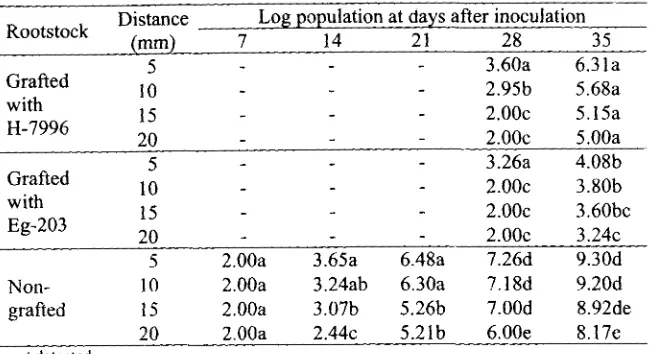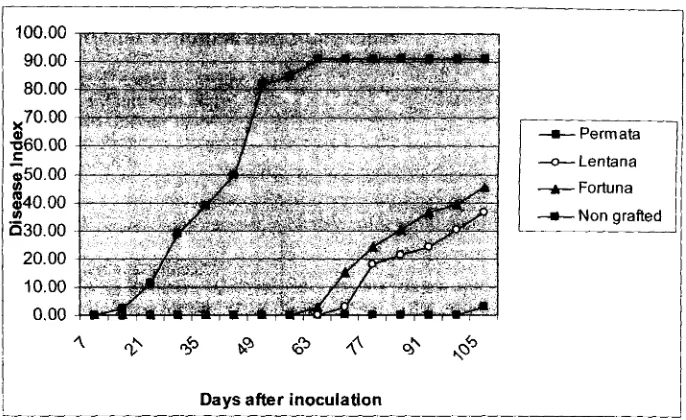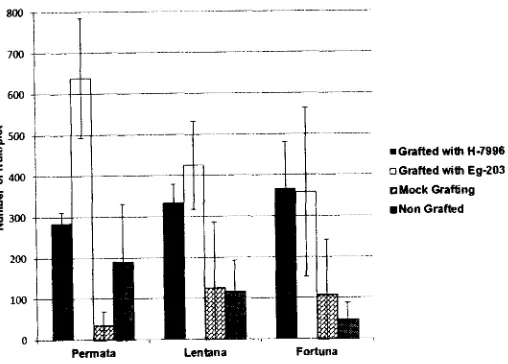I
rsHs
lnternational Society
for
Horticultural
Science
Soci6t6 lnternationale de la Science Horticole
ACTA
HoRTlcuttuRRf@
is a scientifically reviewedpubli-cation of ISHS. lnformation about Acta Horticulturae@ and ISHS is given at the end of this book.
Check out www.actahort.org for details on our latest titles.
Editorial Advisory Board
ol
Acta Horticulturae@Yves Desjardins, Faculty of Agriculture, Department of Plant Science, Horticulture Research Centre, Laval University,
Quebec, Canada, Chair of the Editorial Advisory Board
Jorge Retamales, Universidad de Talca, Escuela de Agronomia,
Talca, Chile
Sadanori Sase, National lnstitute for Rural Engineering, Tsukuba, Japan
Paolo lnglese, Dipartimento di Colture Arboree, Universitd
degli Studi di Palermo, Palermo, ltaly
Y0ksel T0zel, Department of Horticulture, Agriculture Faculty, Ege University, lzmir, Turkey
Julian Heyes, institute of Food, Nutrition & Human Health, Massey University, Palmerston North, New Zealand
Janet Cubey, Science Department, Royal Horticultural Society, Wisley, United Kingdom
lsaac Ore Aiyelaagbe, Department of Horticulture, University
ol Agriculture, Abeokuta, Ogun State, Nigeria
Executive Director
ol
ISHSlr. J. Van Assche
Secretariat of ISHS
PO Box
500
Phone:
+32.16.2?94273001 Leuven
1
Fax:
+32.16.2294 50Belgium
E-mail:
info@ishs.orgPROCEEDINGS OF
THE
IVth
INTERNATIONAL
SYMPOSIUM
ON
TOMATO
DISEASES
Convener
M.L.
Paret
Orlando, Florida,
USAJune 24-27,2013
ISHS Section Vegetables ISHS Commission Plant Protection ISHS Working Group Tomato Diseases
Acta Horticulturae
1069ISSN 0567-7572
ISBN 97S 94 6261059 0, Acta Horticulturae n". 1069
Price for non-members of ISHS: € 86,-Published by ISHS, February 2015
Executive Director of ISHS: J. Van Assche
Technical Processing: S. Franssens
ISHS Secretariat, PO Box 500,3001 Leuven 1, Belgium
Printed by Drukkerij Geers, Eekhoutdriesstraat 67, 8-9041 Gent (Oostakker), Belgium
o2ttt5 by the Intemational Society for Horticultural Science (ISHS). All rights reserved. No part ofthis book may be reproduced and/or published in any form or by any means, electronic or mechanical, including photocopying, microfilm and recording, or by any information storage and retrieval system, without written
permission from the publishers.
Photographs on the front cover:
l.
Spring 2012Bs2 trial at the Gulf Coast Research and Education Center, University of Florida canied out by John W. Scott. Trial entry on the left is tomato hybrid Fla-8314 containing the pepper Bs2 gene,conferring Xanthomonas-resistance. The entry on the right is a susceptible tine, VF36. Bacterial spot disease is evident on VF36 plants as defoliation and reduced fruit set. In this and numerous other trials, Bs2-containing plants have negligible defoliation and typically show a doubling ofyields. (by courtesy
of D. Horvath, Two Blades Foundation).
2.
Bacterial wilt disease caused by Ralstonia solancearum leading to severe wilting of the plants (bycourtesy of M. Paret, University of Florida).
3.
Target spot disease caused by Corynespora cassiicola causing large cracks on tomato fruit (by courtesy of M. Paret, University of Florida).4.
Tomato spotted wilt vla.r affecting tomato fiuit (by courtesy of M. Paret, University of Florida).5.
Bacterial spot caused by Xanthomonas perforans causing leaf spots on tomato (by courtesy of M. Paret,University of Florida).
6.
Fresh market tomato production in North Florida (by courtesy of M. Paret, University of Florida).Editors
M.L.
ParetDepartment of Plant Pathologt/NFREC, University of
Florida,
USAG.E. Vallad
Department of Plant
Pathologt/GcREc,
University ofFlorida,
()SA S. ZhangDepartment of Plant Pathologt/TREC, University of
Florida,
USAJ.B. Jones
IJniversity of
Florida,
USAEditorial Board
A.
Crescenzi, Chair of the ISHS Working Group on Tomato Diseases, Universi4tof
Basilicata,
Italy
S.
Miller,
The Ohio State University, USAJaw-Fen Wang, AVRDC
-
The World Vegetable Center, Chinese TaipeiJ.B. Jones, University of
Florida,
USAA.M.
Alvarez, University ofHawaii,
USA J. Scott, University ofFlorida,
USAM.A. Al-Saleh, King Saud University, Saudi Arabia S.M. Olson, University of
Florida,
USATao Zhou, China
Agricultural
Universitl,, China P.D. Roberts, SWFREC, University ofFlorida,
USAD. Shteinberg, Ministry of Agricultttre and Rural De;-elopment, Israel T. Momol, Departmenl of Plant Pathologt, University of
Florida,
USA J. Freeman, Virginia Tech, USALIST
OFCONTENTS
Preface
List of Contents List of Authors List of Participants
Host-Pathogen
Interaction
Plant-Pathogen-Symbiont Interactions in the Tomato Phyllosphere
N. Potnis, A.H.C. van Bruggen, J.B. Jones,
K.
Cowles and J.D. BarakMultilocus Sequence Analysis of a Worldwide Collection of Xanthomonas
Strains, Causing Bacterial Leaf Spot
S. Timilsina, J.B. Jones, N. Potnis,
E.
Goss, G.V. Minsavage, J.C. Hong, G.E. Vallad and M. KebedeUsing Proteomics and Genomics to Search for Low Temperature Virulence
Factors in Ralstonia solanacearum
A.M. Bocsanczy, D.J. Norman, J.C. Huguet-Tapia.
U. Achenbach and A. Mangravita-Novo
The Genetic Determinants of Symptoms Induction by Pepino Mosaic Virus in Tomato
B. I{asi6w-Jaroszewska, J. Minicka, N. Borodynko and H. Pospieszny
Tomato Breeding
for
Disease ResistanceThe Pepper BsZ Gene Confers Effective Field Resistarlce to Bacteriai
Leaf
Spot and
Yield
Enhancement in Florida TomatoesD.M. Horvath, M.H. Pauly, S.F. Hutton, G.E. l'allad, J.l|r. Scott, J.B. Jones, R.E. Stall, D. Dahlbeck, B.J. Staskawicz, D.
Tricoli
and A.V. DeynzeIdentification of Tomato Bacterial Spot Race
Tl,T2,
T3, T4, andXanthomonas gardneri Resistance QTLs Derived from
PI
I14490 Populations Selected for Race T4J.ll.
Scott, S.F. Hutton, R. Shekasteband, S.C. Sim and D.M. FrancisCombinations
of
?'y Resistance Genes Generally Provide More Effective Control against Begomoviruses than Do Single GenesS.F. Hutton, J.L/. Scou, R. Shekasteband,I. Levin and M. Lapidot
Screening Cultivated and
Wild
Tomato Germplasm for Resistance toXanthomonas gardneri
D. Liabeu.f, D.M. Francis and S.C. Sim
Selection for Resistanceto Sclerotium
rolfsii
in Accessions of Solanumlycopersicum var. cerasiforne in Westcrn Mexico
J.L. Martinez-Ramirez, E.R. Guzman, C.M. Duran-Marlinez, J.V. Navaruo, E.L. Alcocer and G.C. Abascal
Interaction between Fusarium
Wilt
Resistance Genes in Tomato andFusarium orysporum f- sp. lycopersrci Races 1 and 2
M. Niederheitmann, J. Gonqalves, A. Mat, T. Bentley and
J.
Green6
'7
l3
l5
23
33
39
41
53
59
65
7t
i
Gaafting Local Commercial Tomato Cultivars
with
H-7996 and Eg-203 to 9rypress Bacterial Wllt
(Ra I s t o n i a s o I anac e aru m) in IndonesiaT.
Antiyanto,
S.D. Nurcahyanti, D. Indradewa andJ.
ytridadaManagement of Powdery
Mildew
in Greenhouse Tomato Production with Biorational Products and FungicidesF- Balsal-Gurel and S.A. tr,Iiller
Preliminary Results on the Effect of Acibenzolar-S-Methyl on
Abiotic
Stresses in Tomato: "Blossom End Rot" Control
-1- Fanigliulo, O. Mancino, A. Crescenzi and P. Cestari
Control of Tomato
Yellow
Leaf Curl Disease in Tomato-4. Fanigliulo,
A.
Viggiano, A. Crescenzi, E. Zingariello, R.-Liguori
and R. Senn.{,bility of Colored Mulches and Growtubes to Deter Thrips and Reduce
lncidence of Tomato Spotted
Wilt
F.G. Foshee
III,
T.A. Monday, M.J. Kellev, J.L E.K. Blythe, J.F. Murphy and J.E. BrownM. Lollar.
Tolerance Response to Clavibacter michiganensls subsp. michiganensis in Tomato Plants Treated
with
SeleniumS. Gonzdlez-Morales, R. Castillo-Godina, A. Benavides-Mendoza and
LJ.
R[os-GonzalezDevelopment of an Innovative
Multi-Level
Knowledge Based TomatoDisease Factsheets
I{.L.
Lewis lvey ond S.A.Miller
Evaluation of Disinfectants to Control Mechanical Transmission of Tomato Viruses and Viroids in Greenhouse Tomatoes
R. Li, S.A.
Miller,
F. Baysal-Gurel, K.-5. Ling and C.J. KurowskiEffect of Aerobic Compost Tea Inputs and Application Methods on
Protecting Tomato from Phytophthora capsici R.ll'. Nicol and P. Burlakoti
Evaluating the Effect of GreenForce S and GreenForce CuCa Products on the Severity of Bacterial Spot and
Wilt,
and Powdery Mildew Diseases onTomato
M.L.V. Resende, L.R.R. Vitorino, P.fu(. Ribeiro
Jilnior,
J.A.G. da Silva,II.H.L.
Renn6 and S.M. MathioniCopper Alternatives for Management of Bacterial Spot (Xanthomonas gardneri) and Bacterial Speck (.Pseudomonas syringae pv. tomalo) in
Processing Tomatoes
C.L. Tn":eman
A
Stimulo-Deterrent Method of Thrips and Tonittto SpottedWilt
VirusManagement in Tomatoes
K.A. Tyler-Julian, J.E. Funderburk, S.lt[. alson, M.L. Paret,
C.G. Webster and S. Adkins
t79
l8s
t9l
197
203
211
221
229
235
243
Grafting Local
Commercial Tomato
Cultivars with
H-7996 and
Eg-203
to
Suppress
Bacterial
Wilt
(,Ralstonia
solanacearam)
in
Indonesia
T. Arwivantor'u. S.D. Nurcahvantil. D. [ndradewa2 and J. Widada]
]Labo.dtoryof
nlarrrEi6i@
'
Department of Agronomy'
Department of Agricultural Microbiology Department of Plant ProtectionFaculty of Agriculture University of Gadjah Mada
Jl Flora
No
I
Bulaksumur Yogyakarta 55281Indonesia
Keywords:
bacterial wilt, Rqlslonia solanacearum, grafring, disease controlAbstract
Bacterial
wilt of
tomato
(Ralstoniasolanqcearun)
causesserious
lossesof
tomato production
in
Indonesia.Currently, proper cultural practices are the
onlyway performed
by
farmers
to
combat
the
disease.While
this
practice could not
effectively prevent infection
of
R.
solanacearumto
the plant,
efforts have
beensought
to
help farmers keep
their
plants away
from
bacterial
wilt.
Grafting of
commercial
cultivars
with
available rootstocks is easyto perform
and theeffectivity
of
this
method
in
suppressingtomato
bacterial
wilt
has been reported
in
manycountries but not
in
Indonesia.The
objectiveof this study
wasto
find
out whether
grafting
susceptiblecommercial cultivars of tomato
with
resistant
rootstocks could suppress the development of bacterialwilt
in
Indonesia. Thegrafting
was conductedin Yogyakarta
regiono Indonesia,in
2011with
H-7996 and Eg-203 as rootstocks andthree commercial cultivars
of
tomato (tPermata',
'Lentana'. and
6Fortunat)
asscions.
The
results indicated
that
the
rootstocks
could
afford the
existenceof
population of
pathogenin
the stem tissue,exhibit
lower disease index comparedwith
mockgrafted and non-grafted plants. The
pathogencould be
detectedin
the
stem tissue abovesoil
surfaceat
21and
28 daysafter inoculation
in
plants grafted
rvith H-7996,but
it
was detectedin
non-grafted andin
mockgrafted
plantsjust in
7 daysafter inoculation.
At
35 daysafter inoculatio4 the
pathogenpopulation in the
ster4tissue
(2 cm
aboveground; varied
from
103(plairts
grafteil
ivith
ng-ZO:)
to
10e(mock grafted plants and non-grafted plants)
cfu/Smm
tissue.The grafted
plants exhibitedlower
disease index,better growth
andyield
comparedwith
thoseof
mockgrafted
and
non-grafted plants.
The
result
suggeststhat
grafting
commercialcultivar
tomatoeswith
either
H-1996or
Eg-203could
suppressbacterial growth,
bacterial
wilt
incidence, and enhancefruit
production.
INTRODUCTION
Bacterial
wilt
of
tomato caused by Ralstonia solanacearum isdifficult to
controldue to genetic
variability of
the pathogen and lackof
durable resistancein
plants. Lossesof tomato production due to bacterial
wilt
varied from a few plants infected in thefield
to 100%.In
Indonesia,it
has been reported that the disease could devastate the crops and cause harvestfailure.
In
Chinese Taipei, the damage caused lossescf
l5-55o/o, and in India l0-100% (Wang andLin,
2005). In South Carolina, the disease incidence was l50%with
lossesfrom l-15%
(Elphinstone,2005). Controlofthe
disease has been conducted primarily by cultural practices such as crop rotation, soil tillage, proper crop management,and
seed treatment.While
these practicescould not effectively
preventinfection
of
R. solanacearum
to
the plant, efforts have been sought to help farmers keep their plants" tarwiyanto@yahoo.com
Proc. IV'h IS on Tomato Diseases Eds.: M.L. Paret et al.
Acta Hort. 1069. ISHS 2015
-
Th;
objectiveof
the present study wasto
evaluate bacterial w.ilt inci.<lence andfruit productioir of tomato influenced by grafting,. Local-commercial cultivars of.tomato in
fruit
oroduction of tomato influenced by grafting. Local commercial cultivars of tomato in Indonesia were graftedwith
H-7996 and Eg-203 and plantedin
thefield
inoculated withhighly virulence
of
R.
solanacearum.The results indicated that the practice
couldsulpiess the development both of the pathogen and the disease'
MATERIALS AND METHODS
A
highly virulent
strainof
R.
solanacearum(strain
Te201l,
rn9"
I
b_iovar 3,phylotype
li
was
used asa
challenge pathogenlgr
the
experiment.The
isolate wai it.6at 6d on the surfaceof
Casamino-acid Peptone Glucose medium (Kelman, 1954) andincubated for 48 h at room temperature before used. Rootstocks (H-7996 and Eg-203) and
scion
('Lentana', 'Fortuna',
'Permata') were separately sownin a
sterile m.edium (topsoil:compost:rice-hull:sand
:
2:3:l:l).
The grafting was
conducted according_to
themethod developed by Black et al. (2003). The grafted plants were transplanted to the field
at
30
days after grafting and inoculated
by
pouring r,r'ith
a
water
suspensionof
R. solanacearum into the stem base (50 ml/plant,
l0'
cfu/ml).The
experimentwas
arrangedas
a
randomized completeblock
with
threereplications. Eiperimental plots consisted
of
a doublerow of
5 m long and 1.4 m width,with
betweenrow
spacingof
0.8 m, 0.4 m between plant, and the distance between plot was0.5 m The
plants were transplantedin
eachblock
as one treatment consistingof
24 plants; 12 plantsfor
disease index observation and 12 plantsfor
destructive samplesfor
determinationof
rhizosphere microbes. The dynamic populationof
R. solanacearumin
tap root
of
tomatowas
determinedevery week
by
plating
the
phosphate buffer suspensionof
crushed cutting-rootin
Casamino-acid Peptone Glucose medium. The disease index (Arwiyanto et al.. 1994) was observed every week for 5 weeks.RESULTS
AND
DISCUSSION'Permata' tomato is the most tolerant cultivar against R. solanacearum compared
with
other cultivars tested.In
the plant graftedwith
H-7996 (HP), R. solanacearum wasdetected
at 28
days after inoculationwhile
in
the mock grafting (grafted against itself,B])-,
lt
was
dgtectedat
7
daysafter
inoculation aswell
as for
non-graftedplant
(P)(Table
l).
At
35 days after inoculation however, the population of the pathogen increased regardless the treatments. The patternof
population dynamics of R. solanacearumin
thestem tissue
of
'Lentana' and 'Fortuna' was similar
with
that
in
'Permata'
(data notshown). The grafted plants delayed the
initial
developmentof
the pathogenin
their stemtissue comoared
with
-those
of
mock grafting and
non-grafted plants.The
patternof
population dynamics
of
the pathogen in the stem tissueof
tomato plants graftedwith
Eg-203 was quite similar compared
to
thatof
graftedwith
H-7996. The distinct difference wasthat
the developmentof
the diseasein the
plants graftedwirh
Eg-203 was muchslower than that in the plants grafted
with
H-7996 (Tablel)
may be Eg-203 more tolerantto bacterial
wilt.
Disease symptoms in grafted plants were observed starting 7 days after inoculation
until
105 days after inoculation. The first symptom was delayed considerably in the plantsgrafted
with
H-7996, i.e., at 56 days after inoculationwhile in
the non-grafted planls thelrst
symptom was observedonly
at2l
daysafter
inoculation(Fig.
l).
Devetopmentof
disease
in
non-grafted plants occurred rigorously and almostall
plantswilted ai
63 daysafter inoculation. The disease development
in
the plants graftedwith
H-7996 was muih slower comparedwith
thatof
non-grafted plants.In
contrast, the disease Cevelopment inthe tomato.plants grafted
with
Fg-203 was verylow
indicating that Eg-203 has-a higher level ofresistance against R. solqnacearum(Fig.2).
The number of
fruit
andfruit
weight produced by plants grafted rvith H-7996 were1',74
away
from
bacterialwilt. Grafting
!f
commercial cultivarswith
available rootstocks iseasy to perform and ihe
effectivifl
of this method in ing tomato bacterialwilt
haseasv to perlbrm and ihe
ellcctlvlfy oI
tnls metno0 ln suppresslng wmato Daclerlalwllt
hasbeen reported
in
many countries (Burleigh et al.,20051 Fresco,2001; Frank et a1.,2010)but grafting has not been practiced in Indonesia'
greater than
mock
grafting plants. When the plants werenot
grafted, the results variedirith
different
cultivarsof
tomatoes tested. Tomatocultivar
'Permata' performed better comparedwith
other cultivars
in
term
of
disease suppression;fruit
weight,
andfruit
number produced when graftedwith
either H-7996 or Eg-203. However, comparedwith
plants grafted
with
Eg-203, there was a significant difference bothin
the numberof fruit
froduced andin
the weightof
tomatoes harvested. Tomatocultivar
'Permata' producedmore
fruit
when graftedwith
Eg-203 followedby
'Lentana' then 'Fortuna' whereas mockgrafted and
non-graftedplants
producedless number
of
fruit.
However,
'Fortuna' froduced morefruit
when graftedwith
H-7996 compared with those graftedwith
Eg-203. Tomatocultivar 'Foftuna'
graftedwith
H-7996 producedfruit with
highest fresh weight,followed
by
'Lentana' then
'Permata'. However, when the tomato plants were graftedwith Eg-203, 'Permata'
produced moreweight
comparedwith
other
tomato cultivars (Figs. 3 and 4).These results
confirm
that grafting tomato plantswith
either H-7996or
Eg-203suppressed
the growth
of
Ralstonia solanaceqrum; bacterialwilt
of
tomatowas
less dev-elopin
the field
when the plants were graftedwith
either H-7996or
Eg-203; andtomato production was enhanced
by grafting
of
local
commercial cultivarswith
either H-7996 or Eg-203.ACKNOWLEDGEMENTS
The work was supported by the Directorate General of Higher Education,
Ministry
of
Education
and
Culture
Republic
of
Indonesia;
grant
No.
18O/SP2H/PL/ Dit. litabmas/lY I 20 12, dated Apri I 30, 20 1 2.Literature Cited
Arwiyanto,
T.,
Goto,M.
and Tsuyumu,S.
1994,Biological control of
bacterialwilt of
tomatoby
an avirulent strainof
Pseudomonas solanqcearum. Ann. Phytopathol. Soc. Japan 60:421-430.Black,
L.L..
Wu, D.L.. Wanq. J.F.. Kalb. T.. Abbas, D. and Chen. J.H. 2003. International CooperatorsGuide. Grafting
Tomatoesfor
Production
in
the
Hot-Wet
Season.AVRDC
pub #03-551.Burleigh, J.R,
Black, L.L.,
Mateo,L.G.,
Cacho,D.,
Aganon, C.P., Boncato,T.,
Arida,I.A.,
Ulrichs, C. and Ledesma, D.R. 2005. Performanceof
grafted tomatoin
CentralLuzon,
Philippines:a
case studyon the
introductionof
a new
technology amongresource-limited farmers. Crop Management.
Elphinstone, J.G. 2005. The current bacterial
wilt
sifuation: a giobal overview. p.9-28. In: C.Allen,
P. Prior andA.C.
Hayward (eds.), BacterialWilt
Disease and The Ralstoniasolanacearum
SpeciesComplex.
APS
Press.The
American
Phytopathological Society. St. Paul. Minnesota, USA.Fresco,
M.C.O.
2001.Grafting
effectivein
producing off-season tomato.BAR
Today3(2).
Kelman,
A.
1954. The relationshipof
pathogenicityin
Pseudomonas solanacearum to colony appearance ou a tetrazolium uediurn. Phytopathology 44:693-695.Louws, F.J., Rivard,
C.L.
and Kubota, C. 2010. Graftingfruiting
vegetablesto
managesoilborne pathogens,
foliar
pathogens, arthropods andweeds
Scientia Horticulturae127:127 -146.
Wang, J.F. and Chih-Hung
Lin.
2005. Integrated Managementof
Tomato bacterialwilt.
AVRDC.Tables
Table
1.
Colonization
of
tap
root by R.
solanacearumon
grafted and
non-grafted 'Permata' tomato plants. Valuesfollowed by
the same numberin
the same column were not significantly different according DuncanMultiple
Range Test'Distance Rootstock
{mml
Log population at days after inoculation
l4
21 28 35Grafted
with
H-7996 5l0
15 203.60a
6.31a2.95b
5.68a2.00c
5.15a2.00c
5.00aGrafted
with
Eg-203 3.26a 2.00c 2.00c 2.00c 4.08b 3.80b 3.60bc 3.24c 5l0
l5
20 Non-grafted 2.00a 2.00a 2.00a 7.00a 5l0
l5
203.65a
6.48a3.24ab
6.30a3.07b
5.26b2.44c
5.21b7.26d
9.30d7.18d
9.20d7.00d
8.92de6.00e
8.17e- not detected
Figures
'&pe4
i __
j:v':I1'"1""!!91
Fig.
l.
Bacterialwilt
development on tomato graftedwith
H-7996"i'
176
[image:11.595.206.532.133.310.2]100.00
90.00 80.00
x70.00
€oo.oo c ?so.ooo
E+o.oo
o
i530.oo
20.00
10.00 0.00
I I
I
I Days after inoculation
Fig. 2. Bacterial
wilt
development on tomato graftedwith
Eg-203.Fig. 3. Production of tomato from grafted and non-grafted plants in a plot.
177
lGrafted with EG-2O3
trGrafted with H-7996
---EMock grafting
sl Non grafted
[image:12.595.62.405.65.275.2] [image:12.595.61.406.353.558.2]rGnft"d wilh H-7996
oGnfted wilh Eg-203
Eitck Grafting
rNon Gnfbd
Pemata Lentana
Fig. 4. Number of tomato fruit produced by grafted and non-grafted plants in a plot.
800 700 6@
!
soog
t
40oo !
5 ,oo
z
200
100
0
[image:13.595.240.494.118.300.2]

